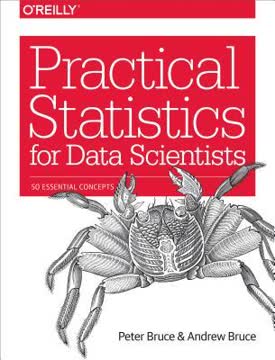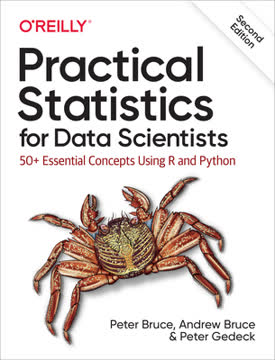Key Takeaways
1. Exploratory Data Analysis: The Foundation of Data Science
The key idea of EDA: the first and most important step in any project based on data is to look at the data.
Origins and importance. Exploratory Data Analysis (EDA), pioneered by John Tukey in the 1960s, forms the cornerstone of data science. It involves summarizing and visualizing data to gain intuition and understanding before formal modeling or hypothesis testing.
Key components of EDA:
- Examining data quality and completeness
- Calculating summary statistics
- Creating visualizations (histograms, scatterplots, etc.)
- Identifying patterns, trends, and outliers
- Formulating initial hypotheses
EDA is an iterative process that helps data scientists understand the context of their data, detect anomalies, and guide further analysis. It bridges the gap between raw data and actionable insights, setting the foundation for more advanced statistical techniques and machine learning models.
2. Understanding Data Types and Structures
The basic data structure in data science is a rectangular matrix in which rows are records and columns are variables (features).
Data types. Understanding different data types is crucial for proper analysis and modeling:
- Numeric: Continuous (e.g., temperature) or Discrete (e.g., count data)
- Categorical: Nominal (unordered) or Ordinal (ordered)
- Binary: Special case of categorical with two categories
Data structures. The most common data structure in data science is the rectangular format:
- Rows represent individual observations or records
- Columns represent variables or features
- This structure is often called a data frame in R or a DataFrame in Python
Understanding data types and structures helps in choosing appropriate visualization techniques, statistical methods, and machine learning algorithms. It also aids in data preprocessing and feature engineering, which are critical steps in the data science workflow.
3. Measures of Central Tendency and Variability
The mean is easy to compute and expedient to use, it may not always be the best measure for a central value.
Central tendency. Measures of central tendency describe the "typical" value in a dataset:
- Mean: Average of all values (sensitive to outliers)
- Median: Middle value when data is sorted (robust to outliers)
- Mode: Most frequent value (useful for categorical data)
Variability. Measures of variability describe the spread of the data:
- Range: Difference between maximum and minimum values
- Variance: Average squared deviation from the mean
- Standard deviation: Square root of variance (same units as data)
- Interquartile range (IQR): Difference between 75th and 25th percentiles (robust)
Choosing appropriate measures depends on the data distribution and the presence of outliers. For skewed distributions or data with outliers, median and IQR are often preferred over mean and standard deviation. These measures provide a foundation for understanding data distributions and are essential for further statistical analysis.
4. Visualizing Data Distributions
Neither the variance, the standard deviation nor the mean absolute deviation are robust to outliers and extreme values.
Importance of visualization. Visual representations of data distributions provide insights that summary statistics alone may miss. They help identify patterns, outliers, and the overall shape of the data.
Key visualization techniques:
- Histograms: Show frequency distribution of a single variable
- Box plots: Display median, quartiles, and potential outliers
- Density plots: Smooth version of histograms, useful for comparing distributions
- Q-Q plots: Compare sample distribution to theoretical distribution (e.g., normal)
These visualizations complement numerical summaries and help data scientists make informed decisions about data transformations, outlier treatment, and appropriate statistical methods. They also aid in communicating findings to non-technical stakeholders, making complex data more accessible and interpretable.
5. Correlation and Relationships Between Variables
Variables X and Y (each with measured data) are said to be positively correlated if high values of X go with high values of Y, and low values of X go with low values of Y.
Understanding correlation. Correlation measures the strength and direction of the relationship between two variables. It ranges from -1 (perfect negative correlation) to +1 (perfect positive correlation), with 0 indicating no linear relationship.
Visualization and measurement:
- Scatter plots: Visualize relationship between two continuous variables
- Correlation matrix: Display correlations between multiple variables
- Pearson correlation coefficient: Measure linear relationship
- Spearman rank correlation: Measure monotonic relationship (robust to outliers)
While correlation doesn't imply causation, it's a valuable tool for exploring relationships in data. It helps identify potential predictors for modeling, detect multicollinearity, and guide feature selection. However, it's important to remember that correlation only captures linear relationships and may miss complex, non-linear patterns in the data.
6. The Importance of Random Sampling and Bias Avoidance
Even in the era of Big Data, random sampling remains an important arrow in the data scientist's quiver.
Random sampling. Random sampling is crucial for obtaining representative data and avoiding bias. It ensures that each member of the population has an equal chance of being selected, allowing for valid statistical inferences.
Types of sampling:
- Simple random sampling: Each unit has an equal probability of selection
- Stratified sampling: Population divided into subgroups, then sampled randomly
- Cluster sampling: Groups are randomly selected, then all units within the group are studied
Avoiding bias. Bias can lead to incorrect conclusions and poor decision-making. Common types of bias include:
- Selection bias: Non-random sample selection
- Survivorship bias: Focusing only on "survivors" of a process
- Confirmation bias: Seeking information that confirms pre-existing beliefs
Proper sampling techniques and awareness of potential biases are essential for ensuring the validity and reliability of data science projects, even when working with large datasets.
7. Sampling Distributions and the Bootstrap Method
The bootstrap does not compensate for a small sample size - it does not create new data, nor does it fill in holes in an existing dataset.
Sampling distributions. A sampling distribution is the distribution of a statistic (e.g., mean, median) calculated from repeated samples of a population. Understanding sampling distributions is crucial for estimating uncertainty and making inferences.
The bootstrap method. Bootstrap is a powerful resampling technique that estimates the sampling distribution by repeatedly sampling (with replacement) from the original dataset:
- Draw a sample with replacement from the original data
- Calculate the statistic of interest
- Repeat steps 1-2 many times
- Use the distribution of calculated statistics to estimate standard errors and confidence intervals
Advantages of bootstrap:
- Does not require assumptions about the underlying distribution
- Applicable to a wide range of statistics
- Particularly useful for complex estimators without known sampling distributions
The bootstrap provides a practical way to assess the variability of sample statistics and model parameters, especially when theoretical distributions are unknown or difficult to derive.
8. Confidence Intervals: Quantifying Uncertainty
Presenting an estimate not as a single number but as a range is one way to counteract this tendency.
Purpose of confidence intervals. Confidence intervals provide a range of plausible values for a population parameter, given a sample statistic. They quantify the uncertainty associated with point estimates.
Interpretation. A 95% confidence interval means that if we were to repeat the sampling process many times, about 95% of the intervals would contain the true population parameter.
Calculation methods:
- Traditional method: Uses theoretical distributions (e.g., t-distribution)
- Bootstrap method: Uses resampling to estimate the sampling distribution
Factors affecting confidence interval width:
- Sample size: Larger samples lead to narrower intervals
- Variability in the data: More variability leads to wider intervals
- Confidence level: Higher confidence levels (e.g., 99% vs. 95%) lead to wider intervals
Confidence intervals provide a more nuanced view of statistical estimates, helping data scientists and decision-makers understand the precision of their findings and make more informed decisions.
9. The Normal Distribution and Its Limitations
It is a common misconception that the normal distribution is called that because most data follow a normal distribution, i.e. it is the normal thing.
The normal distribution. Also known as the Gaussian distribution, it's characterized by its symmetric, bell-shaped curve. Key properties:
- Mean, median, and mode are all equal
- 68% of data falls within one standard deviation of the mean
- 95% within two standard deviations, 99.7% within three
Importance in statistics:
- Central Limit Theorem: Sampling distributions of means tend to be normal
- Many statistical tests assume normality
- Basis for z-scores and standardization
Limitations:
- Many real-world phenomena are not normally distributed
- Assuming normality can lead to underestimation of extreme events
- Can be inappropriate for inherently skewed data (e.g., income distributions)
While the normal distribution is theoretically important and useful in many contexts, data scientists must be cautious about assuming normality without checking their data. Techniques like Q-Q plots and normality tests can help assess whether the normal distribution is appropriate for a given dataset.
10. Long-Tailed Distributions in Real-World Data
Assuming a normal distribution can lead to underestimation of extreme events ("black swans").
Long-tailed distributions. Many real-world phenomena exhibit long-tailed distributions, where extreme events occur more frequently than predicted by normal distributions. Examples include:
- Income distributions
- City populations
- Word frequencies in natural language
- Stock market returns
Characteristics:
- Higher kurtosis (more peaked) than normal distributions
- Heavier tails, indicating higher probability of extreme events
- Often asymmetric (skewed)
Implications for data science:
- Need for robust statistical methods that don't assume normality
- Importance of considering extreme events in risk analysis and modeling
- Potential for using alternative distributions (e.g., log-normal, power law)
Recognizing and properly handling long-tailed distributions is crucial for accurate modeling and decision-making in many domains. It requires a shift from traditional statistical thinking based on normal distributions to more flexible approaches that can capture the complexity of real-world data.
Last updated:
FAQ
What's "Practical Statistics for Data Scientists: 50 Essential Concepts" about?
- Overview of the book: The book is a comprehensive guide to understanding and applying statistical concepts in data science. It covers 50 essential statistical concepts that are crucial for data scientists.
- Authors' expertise: Written by Peter Bruce and Andrew Bruce, the book leverages their extensive experience in statistics and data science to provide practical insights.
- Target audience: It is designed for data scientists, analysts, and anyone interested in applying statistical methods to real-world data problems.
- Practical focus: The book emphasizes practical applications of statistics in data science, making it a valuable resource for professionals in the field.
Why should I read "Practical Statistics for Data Scientists"?
- Essential concepts: The book distills complex statistical concepts into 50 essential topics, making it easier to grasp the fundamentals of data science.
- Practical applications: It provides practical examples and code snippets, helping readers apply statistical methods to real-world data problems.
- Comprehensive resource: Whether you're a beginner or an experienced data scientist, the book serves as a comprehensive reference for statistical techniques.
- Enhance data analysis skills: By understanding these concepts, readers can improve their data analysis skills and make more informed decisions based on data.
What are the key takeaways of "Practical Statistics for Data Scientists"?
- Exploratory Data Analysis (EDA): The book emphasizes the importance of EDA as the first step in any data science project, highlighting techniques for summarizing and visualizing data.
- Data types and structures: It covers different data types, such as continuous, discrete, categorical, and binary, and their importance in data analysis and modeling.
- Sampling and bias: The book discusses the significance of random sampling and the impact of bias on data analysis, providing strategies to minimize bias.
- Statistical distributions: It explains various statistical distributions, including normal, binomial, and Poisson distributions, and their applications in data science.
What are the best quotes from "Practical Statistics for Data Scientists" and what do they mean?
- "Data science is a fusion of multiple disciplines": This quote highlights the interdisciplinary nature of data science, combining statistics, computer science, and domain-specific knowledge.
- "The first and most important step in any project based on data is to look at the data": Emphasizes the critical role of exploratory data analysis in understanding and preparing data for analysis.
- "The bootstrap does not compensate for a small sample size": Warns against the misconception that bootstrapping can create new data, instead of providing insights into sampling variability.
- "Most data are not normally distributed": Challenges the common assumption that data follow a normal distribution, urging data scientists to consider alternative distributions.
How does "Practical Statistics for Data Scientists" approach Exploratory Data Analysis (EDA)?
- Foundation of EDA: The book describes EDA as a crucial step in data science, focusing on summarizing and visualizing data to gain insights.
- Historical context: It traces the development of EDA back to John Tukey's pioneering work, emphasizing its evolution with modern computing power.
- Techniques and tools: The book covers various EDA techniques, including boxplots, histograms, and density plots, and their applications in data analysis.
- Importance of EDA: It highlights the role of EDA in identifying patterns, anomalies, and relationships within data, setting the stage for further analysis.
What are the different data types discussed in "Practical Statistics for Data Scientists"?
- Continuous data: Data that can take any value within an interval, such as temperature or time duration.
- Discrete data: Data that can only take integer values, like counts or occurrences of an event.
- Categorical data: Data that can only take a specific set of values, such as types of TV screens or state names.
- Binary and ordinal data: Special cases of categorical data, with binary having two categories (e.g., yes/no) and ordinal having an explicit order (e.g., ratings).
How does "Practical Statistics for Data Scientists" explain sampling and bias?
- Random sampling: The book emphasizes the importance of random sampling to ensure representativeness and reduce bias in data analysis.
- Sample bias: It discusses how sample bias can occur when a sample misrepresents the population, leading to misleading conclusions.
- Historical examples: The book uses historical examples, like the Literary Digest poll, to illustrate the impact of sample bias.
- Strategies to minimize bias: It provides strategies, such as stratified sampling, to minimize bias and improve data quality.
What statistical distributions are covered in "Practical Statistics for Data Scientists"?
- Normal distribution: The book explains the normal distribution's role in statistical theory and its limitations in representing real-world data.
- Binomial distribution: It covers the binomial distribution for modeling binary outcomes, such as success/failure scenarios.
- Poisson distribution: The book discusses the Poisson distribution for modeling the frequency of events over time or space.
- Exponential and Weibull distributions: It introduces these distributions for modeling time between events and changing event rates, respectively.
How does "Practical Statistics for Data Scientists" address the concept of correlation?
- Correlation coefficient: The book explains the correlation coefficient as a metric for measuring the association between numeric variables.
- Correlation matrix: It describes how to use a correlation matrix to visualize relationships between multiple variables.
- Scatterplots: The book emphasizes the use of scatterplots to visualize the relationship between two numeric variables.
- Limitations of correlation: It warns about the limitations of correlation, such as sensitivity to outliers and non-linear relationships.
What is the role of the bootstrap method in "Practical Statistics for Data Scientists"?
- Bootstrap sampling: The book describes the bootstrap as a method for estimating the sampling distribution of a statistic by resampling with replacement.
- Applications: It highlights the bootstrap's applications in assessing variability, constructing confidence intervals, and improving model predictions.
- Advantages: The book emphasizes the bootstrap's flexibility and applicability to various statistics without relying on distributional assumptions.
- Limitations: It clarifies that the bootstrap does not create new data or compensate for small sample sizes, but rather provides insights into sampling variability.
How does "Practical Statistics for Data Scientists" explain confidence intervals?
- Definition: The book defines confidence intervals as a range of values that likely contain the true value of a sample statistic.
- Bootstrap confidence intervals: It describes how to construct confidence intervals using the bootstrap method, emphasizing its flexibility.
- Interpretation: The book explains how confidence intervals provide a measure of uncertainty, helping to communicate the potential error in estimates.
- Factors affecting width: It discusses factors that affect the width of confidence intervals, such as sample size and confidence level.
What are the implications of long-tailed distributions in "Practical Statistics for Data Scientists"?
- Definition: The book defines long-tailed distributions as those with extreme values occurring at low frequency, often skewed.
- Challenges: It highlights the challenges of modeling long-tailed distributions, such as underestimating extreme events.
- Examples: The book uses examples like stock returns to illustrate the prevalence of long-tailed distributions in real-world data.
- Alternative approaches: It encourages data scientists to consider alternative distributions and methods to account for long-tailed data.
Review Summary
Practical Statistics for Data Scientists receives mostly positive reviews, with readers praising its concise yet comprehensive overview of statistical concepts for data science. Many find it useful as a reference or refresher, particularly for those with some background in statistics. The book's practical approach and clear explanations are appreciated, though some readers note it may be too basic for experienced data scientists. The inclusion of R code examples is helpful for some but limiting for others. Overall, it's considered a valuable resource for understanding statistical methods in data science.
Similar Books



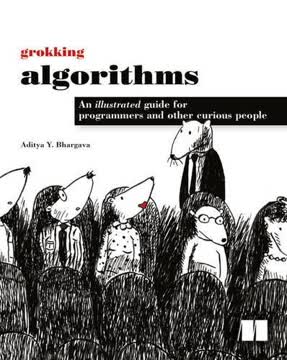

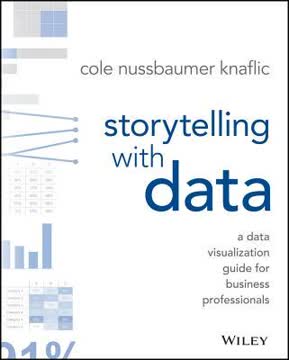

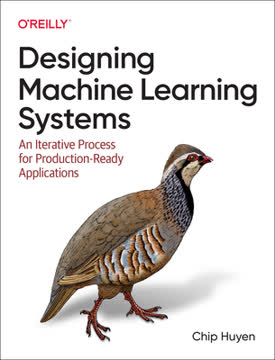
Download PDF
Download EPUB
.epub digital book format is ideal for reading ebooks on phones, tablets, and e-readers.
